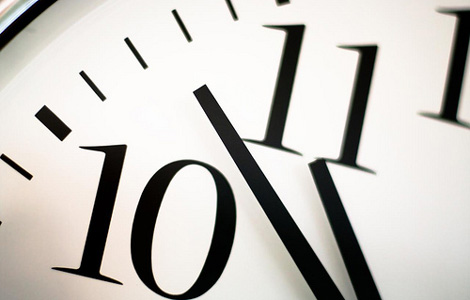The Myth of Making Up Time
Unless your flight is over six hours, there’s usually not much the crew can do to shave off more than a few minutes.
Have you ever been on a delayed flight and had the crew come on the PA and say they would try to make up some of the time in the air? Unless your flight is over six hours, there’s usually not much they can do to shave off more than a couple of minutes. I recently heard this promise from a crew on the short flight from Washington D.C. to New York. This is a flight that’s already in the 40 minute range, give or take a couple of minutes, and it’s nearly impossible to improve on it — especially when you factor in the vectoring required during the approach phase of the flight.
Last night I was scheduled to fly the red-eye from Las Vegas to New York, and we were delayed about an hour because our plane was late getting in. I was at the departure gate before the plane showed up, and a few passengers came up to ask if we would be able to make up some of the time in the air. I took a look at our flight plan, and saw a flight time of 4:03. That’s pretty good for this flight; my personal best for that route is 3:56, and usually it falls in the 4:15 to 4:40 range, depending on winds aloft.
Looking deeper into the flight plan, I noticed that our dispatcher had used a Cost Index (CI) of 999, which is the max. This is a number we put into the Flight Management Computer, and it determines the power settings and airspeeds to be used throughout the flight. If we’re on time and the winds are extremely favorable, the CI might be set to zero, giving us maximum fuel efficiency since an on-time or early arrival is virtually assured. With the 999 setting, the company had decided that we would sacrifice fuel economy to make up as much time as possible and maybe get some passengers to their connecting flights in New York. The difference between these two settings on a flight of this length is probably around 10-15 minutes, but at the expense of a lot of extra fuel burn for the shorter flight.
After seeing the high CI, I explained to the passengers who were interested that we were already planning for the quickest flight possible, and wouldn’t be able to improve on it. We could ask for a direct routing once airborne, and at this time of night we’d probably get approval to fly directly to Wilkes-Barre, Pennsylvania once we were handed off to Los Angeles Center. This sounds great, but the net savings for this trans-con flight is just a few minutes.
I try to avoid promising any time gains because there are so many variables that can make a liar out of me. On this flight, for example, we encountered greater than usual delays in the approach due to a temporary closure of one of the arrival runways. A landing aircraft had hit a bird when touching down, and they closed that runway while a ground vehicle did an inspection. This backed us up and probably added 10-15 minutes to our flight time — much more than any savings we got from direct routing or the higher cost index.
/https://tf-cmsv2-smithsonianmag-media.s3.amazonaws.com/accounts/headshot/Steve-Satre-headshot.jpg)

/https://tf-cmsv2-smithsonianmag-media.s3.amazonaws.com/accounts/headshot/Steve-Satre-headshot.jpg)